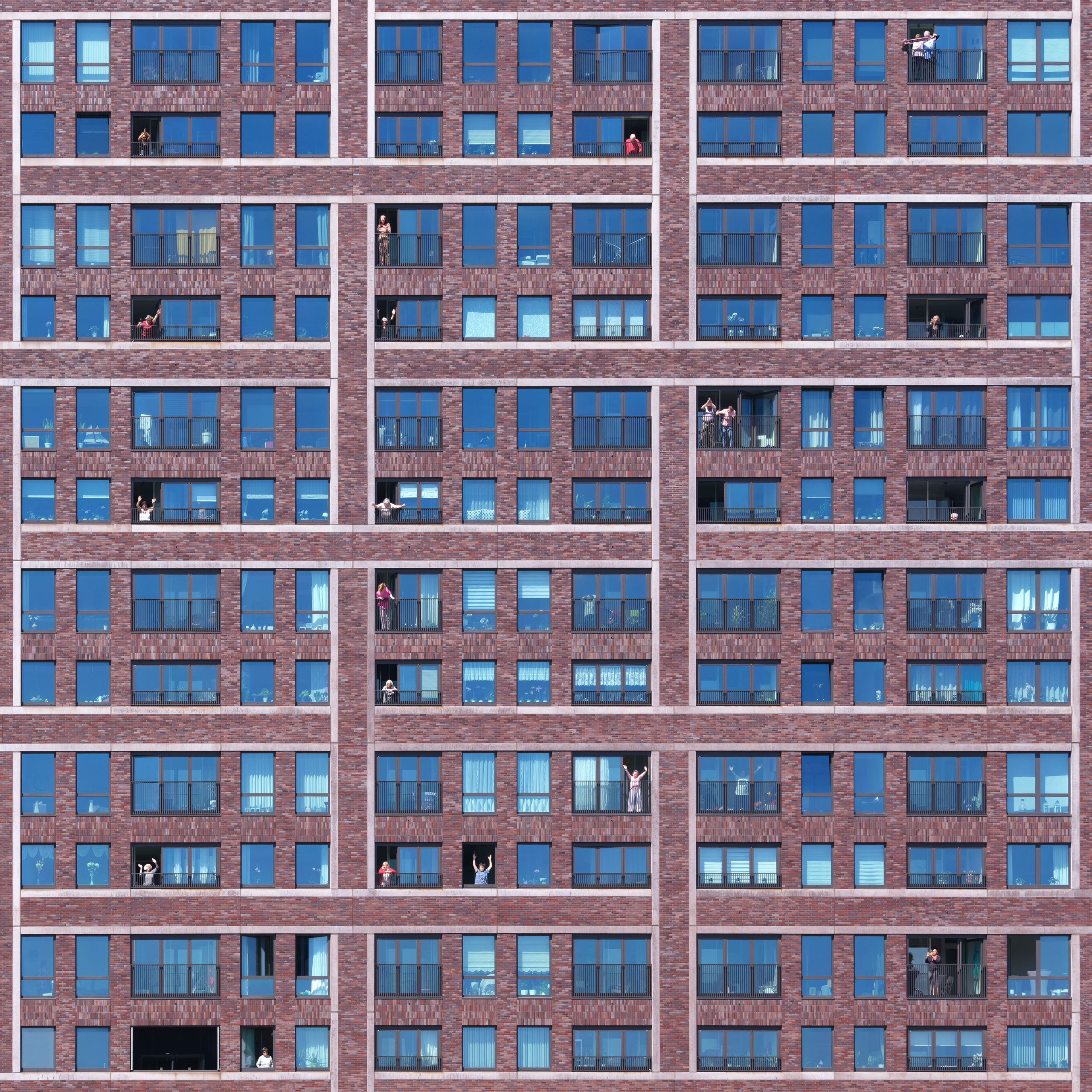The judging process for Architizer's 12th Annual A+Awards is now away. Subscribe to our Awards Newsletter to receive updates about Public Voting, and stay tuned for winners announcements later this spring.
The Museum Island (Museumsinsel) in Berlin is a museum complex that is so unique, it is difficult to find a similar place elsewhere in the world. The museum complex sits on the northern part of the Spree Island over the Spree River in central Berlin. It comprises five historic museums built between 1824 and 1930, plus one new building by David Chipperfield Architects finished in 2018. The complex as a whole was listed as a UNESCO World Heritage Site in 1999, as “a social phenomenon owes its origins to the Age of Enlightenment in the 18th century.”
The first museum on the site, the Altes Museum, was designed by the Prussian architect and planner Karl Fredrich Schinkel, by order of King Frederick William III of Prussia. The king’s successor, King Frederick William IV, after 11 years of the Altes Museum’s completion in 1830, decided to rebuild the Spree Island into “a sanctuary for art and science.”
Following the king’s order, the architect Friedrich August Stüler, a student of Schinkel, developed the original plan of the complex. The first two museum buildings finished after the Altes Museum — the Neues Museum and the Alte Nationalgalerie — were both built as Stüler has planned. Meanwhile, the plan of later two of the five that we see today, namely the Bode-Museum and the Pergamonmuseum, was iterated due to a railway that cut across the top bit of the island in 1882.
All five museum buildings were damaged to different extents during the world wars. Thankfully, commissioned by Stiftung Preußischer Kulturbesitz (Prussian Cultural Heritage Foundation), thorough repairs and reconstructions have been carried out since the 1990s, after the fall of the Berlin Wall. The museums were first built by different architects and later renovated by different architects but harmonically blend into one both before and now.

The front of the Altes Museum by Taxiarchos228 via Wikimedia Commons.
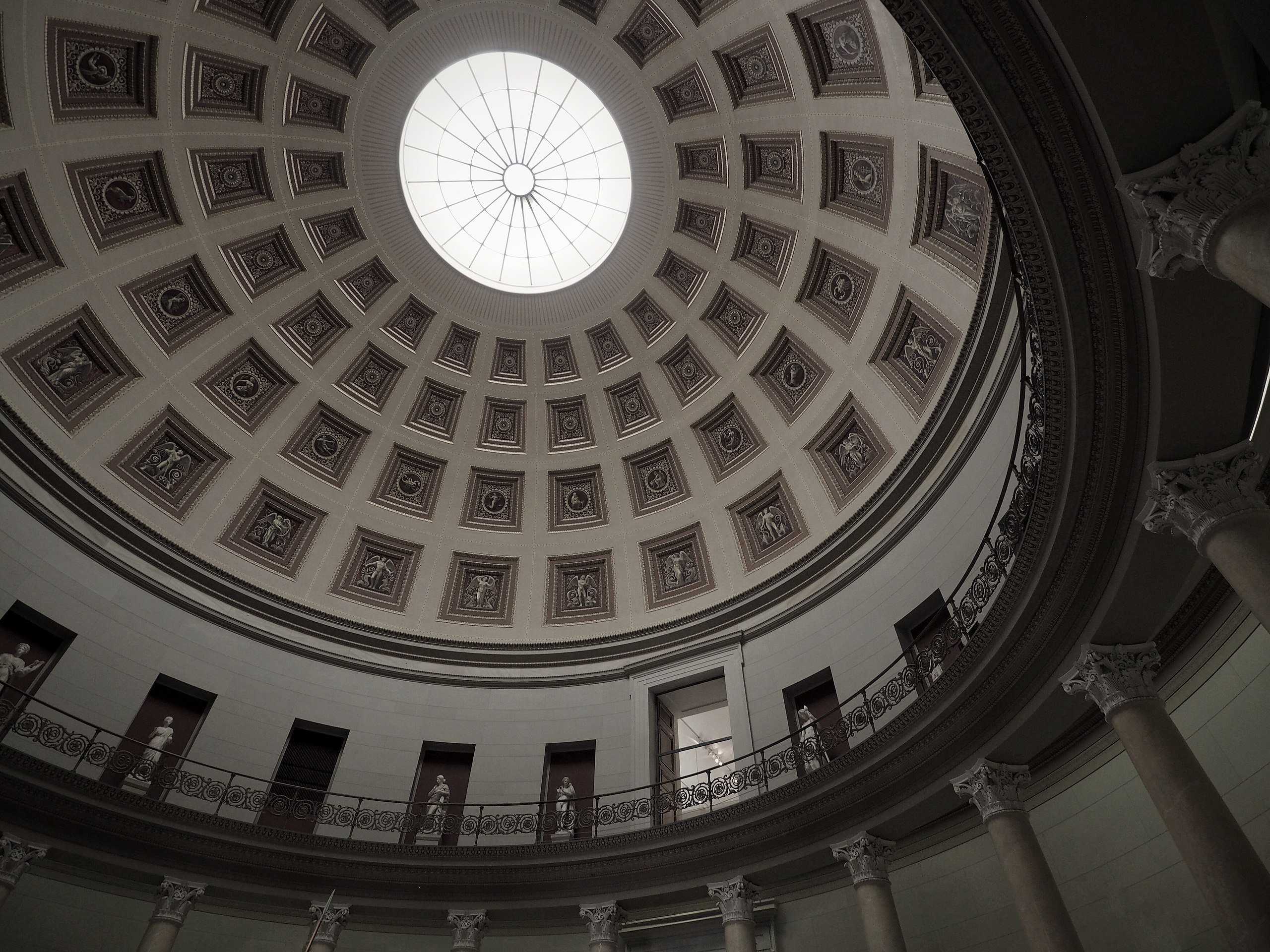
The paneled ceiling in the rotunda of the Altes Museum by Stefan Jurca via Wikimedia Commons.
Altes Museum
Located in the middle of Spree Island, the Neo-Classical building was designed by by Schinkel in 1830. It has a temple-like front with a long portico through which people enter the museum. Upon entering, the visitors are dwarfed by a three-story tall central rotunda punctured by a gaping oculus. Classical antiquities are already visible there.
The building was once reconstructed in the post-war period to house contemporary artworks of the GDR. Hilmer & Sattler and Albrecht took the recent restoration work, which won the competition in 1998. Yet, major restoration work has not been done but some emergent repairs.
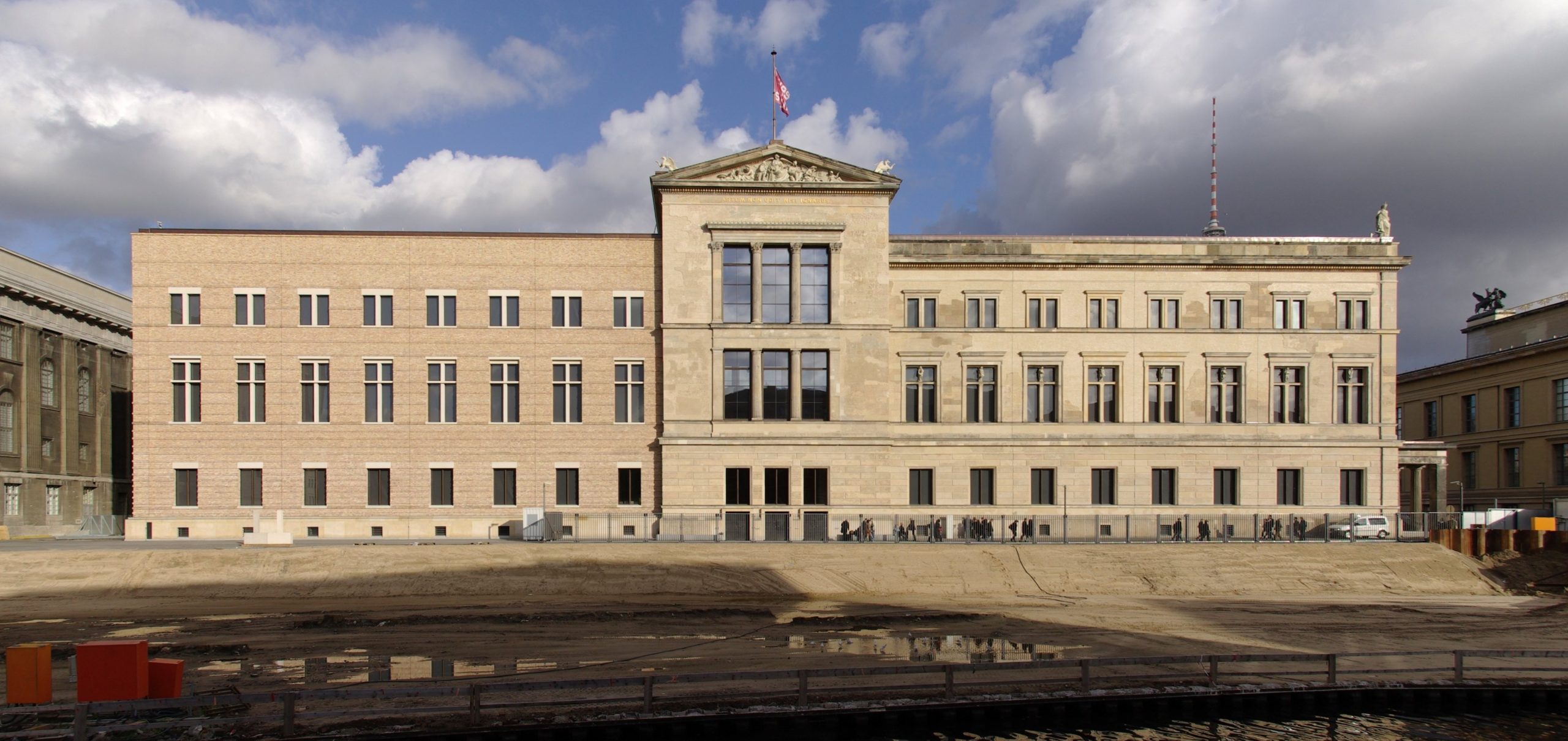
The front of the Neues Museum by Janericloebe, public domain.
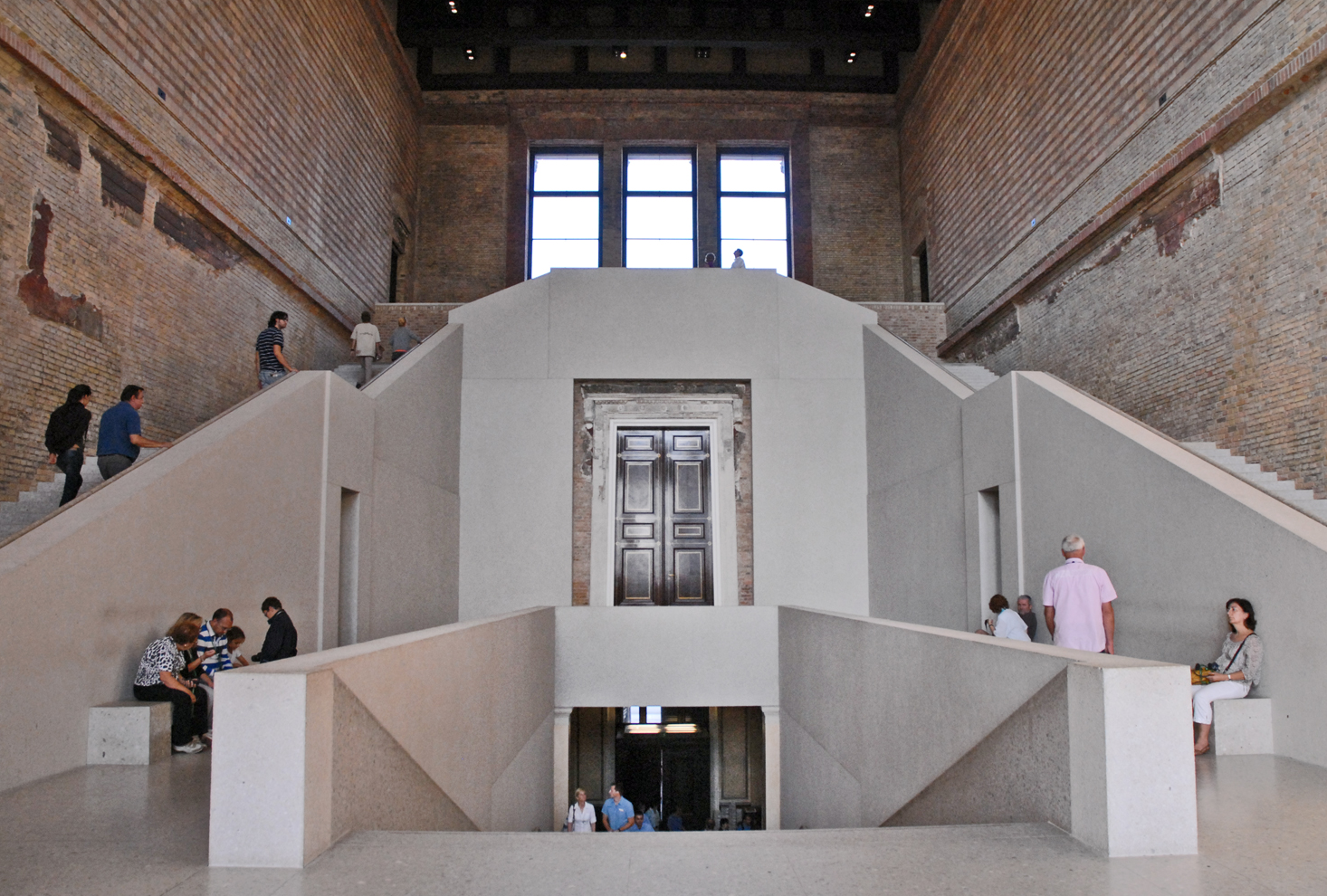
The main staircase in the Neues Museum by Jean-Pierre Dalbéra via Wikimedia Commons.
Neues Museum
To the back of the Altes Museum is the Neues Museum, renovated by David Chipperfield Architects and Julian Harrap Architects. The original building was built between 1843 and 1859 by Friedrich August Stüler and opened as the second one out of the five museums. After being partly destroyed by bombs during WWII, there was barely any action of restoration taken until the competition in the 1990s.
The restoration project cleaned the site and completed the building’s function with interventions both externally and internally. The interventions, such as new floor plates and staircases, are done in modern architectural languages while the surviving historic structures are kept visible to the largest extent possible.

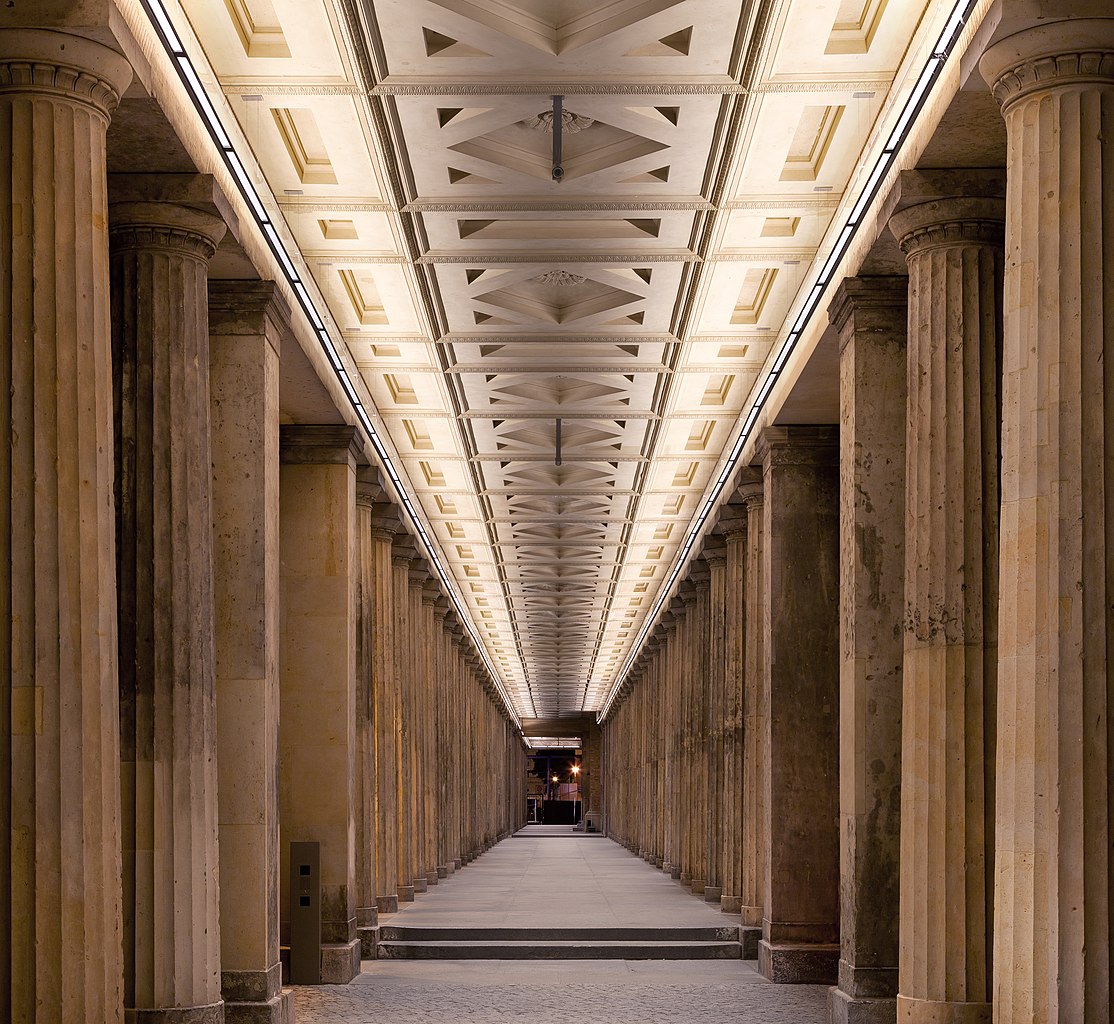
The Alte Nationalgalerie © Thomas Wolf (CC BY-SA 3.0 DE) via Wikimedia Commons.
Alte Nationalgalerie
Next to the Neues Museum is another museum designed by Stüler. In 2001, it became the first one to reopen among the five. The two museums by Stüler are of similar size and much smaller than the other three, while the Alte Nationalgalerie was in a way better condition than the Neues Museum in the 1990s.
HG Merz took charge of the complete renovation in 1992. The gallery remained open during the exterior refurbishment until 1998 when it was closed for a thorough renovation. The building now stands with most of the original architectural characters alive, housing arts of the 19th century.
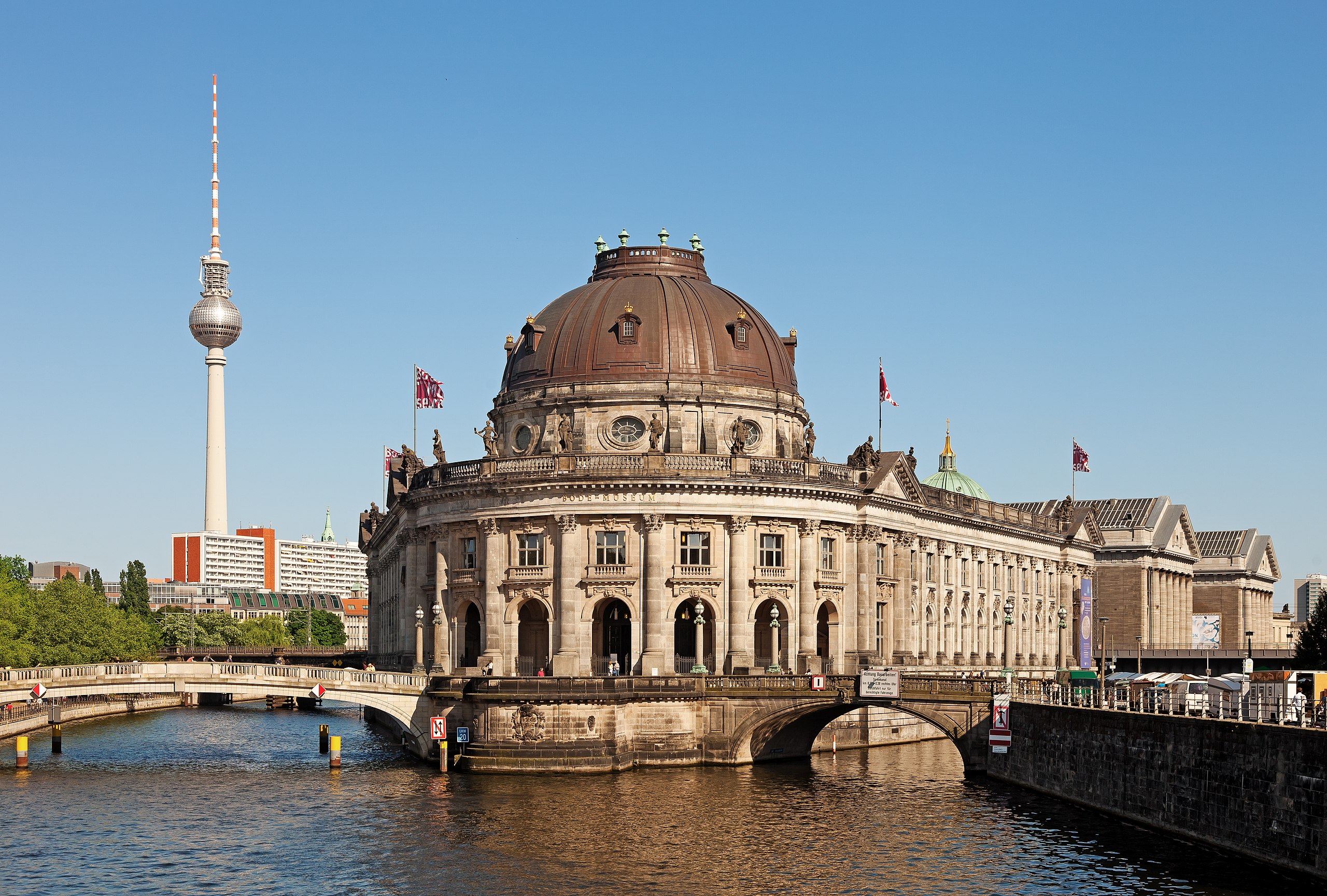
The Bode-Museum © Thomas Wolf (CC BY-SA 3.0 DE) via Wikimedia Commons.

Inside the Bode-Museum, image by Martin Kraft (CC BY-SA 3.0) via Wikimedia Commons.
Bode-Museum
The Bode-Museum occupies the northern tip of Museum Island. The museum was built between 1898 and 1904 by Ernst Eberhard von Ihne and features a large and a small cupola respectively at the two ends of the building. The Bode-Museum and the later built Pergamonmuseum flank either side of the railway built in 1882.
Planned and carried out by Heinz Tesar and Atelier Christoph Fischer, the renovation connects the two museums with new exhibition spaces created under the railway. Continuing the repair started after WWII, the project also encompassed the thorough restoration of all historic decors.
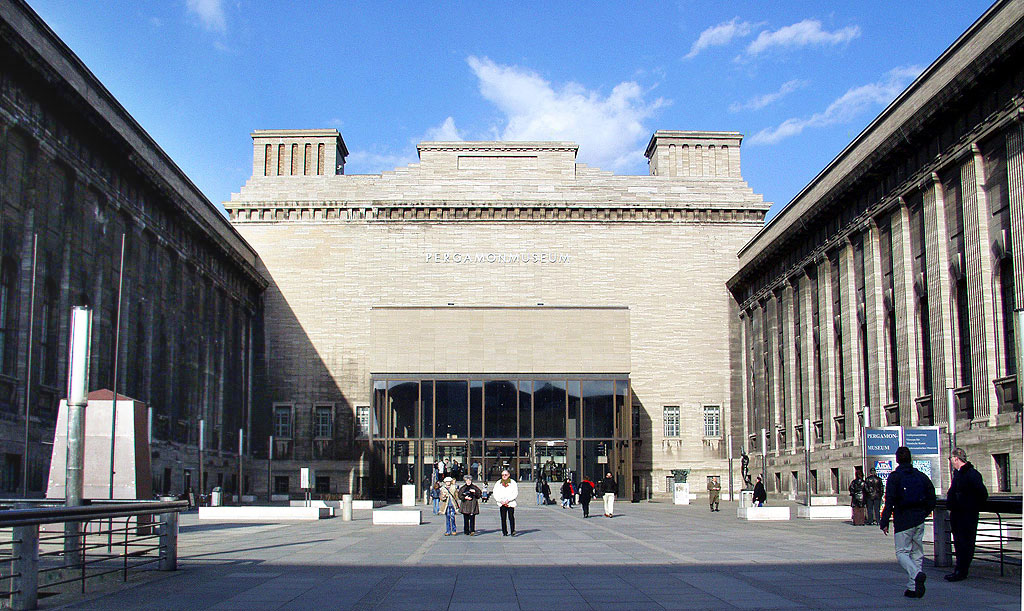
In the courtyard of the Pergamonmuseum © Raimond Spekking / CC BY-SA 4.0 (via Wikimedia Commons).
Pergamonmuseum
The last and largest one of the five is the Pergamonmuseum, built between 1910 and 1930 by Alfred Messel. Unlike the other four, it is still under construction and partially closed. A fourth wing is to be added to the old three wings, forming a surrounded open courtyard in the middle, according to the plan by O.M. Ungers. The new wing will also continue the circulation from James-Simon-Galerie in a straight line.


James-Simon-Galerie by David Chipperfield Architects, Berlin, Germany
James-Simon-Galerie
The only new built on the island is the James-Simon-Galerie by David Chipperfield Architects. It is directly connected to the Neues Museum and the Pergamonmuseum. The building features modern colonnades that echo the classical languages of its neighbors. It is functionally complementary to the Museum Island, providing touristic services including an information center, lockers, dining and shopping spaces etc. Rather than exhibit something, it is more of an infrastructure with rich revenue earning opportunities.
The judging process for Architizer's 12th Annual A+Awards is now away. Subscribe to our Awards Newsletter to receive updates about Public Voting, and stay tuned for winners announcements later this spring.






